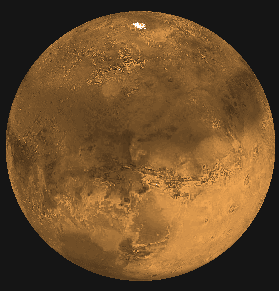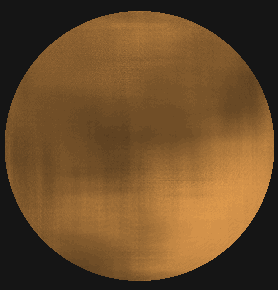

You may recall the excitement several months ago when Mars reached the closest point in its orbit to Earth. At that time, the two planets were "just" 55.8 million km (35 million miles) apart. Newspapers and television reporters told us that it was our chance to get the best views of Mars we'd ever see in our lifetimes.
Well, it really wasn't such a big deal. Every two years or so, the Earth passes Mars as they both revolve around the Sun. While it is true that the two planets were closer than usual in 2003, it wasn't a huge improvement over some other recent approaches. In 1956, Mars came within 57.0 million km, and in 1971, Mars came within 56.2 million km. So while this was a record, it beat the previous closest approach by less than one percent. So don't worry: if you didn't see Mars at its best in August, there will be several other apparitions within your lifetime which will show you just as much.
Tonight, Mars is about twice as distant as it was in August: 102 million km. Its disk is now only 14 arcseconds across, compared to about 25 arcseconds at its best. If you look closely with a telescope, you may still be able to see one of the icy polar caps and some of the surface markings.


The image on the left shows a simulated picture of the planet at 10:00 PM tonight. Don't expect your view through the eyepiece to resemble this! As light from Mars passes through the Earth's atmosphere, it becomes scrambled by turbulence and motions of the air. As a result, our view will more likely resemble the picture on the right, which has been blurred with a filter 3 arcseconds wide. If you are persistent and watch for several minutes, you may catch a moment when the air becomes still. In that second of sharpness, you might expect to see as much detail as appears in this picture, taken here at the RIT Observatory with our 12-inch telescope. Professor Tracy Davis combined about 50 individual snapshots to make this composite:



If you have a chance to look at Mars through a telescope, draw everything you see in the boxes above.